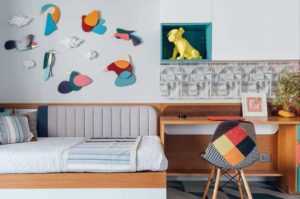Things to remember in interior designs Determine Your Style
Determine Your Style
How does one need a space to feel? Here’s a trick to assist you hone in on your style: take a glance at your closet. does one prefer tailored pieces or does one prefer looser and easier items? does one gravitate toward certain colors or patterns? differently to assist you identify your style is to consider key words that outline how you would like an area to feel. Traditional, formal, elegant? Playful, humorous, inviting? Monochromatic, streamlined, modern? note of design inspirations in every facet of life. I often use these as a start line to debate with clients when I’m hired to assist them design the interiors of their homes. Recall a hotel during which you’ve stayed or restaurant during which you’ve dined that particularly struck your fancy. Perhaps it had been a minimal interior from your trip to Japan or a clubby bar in ny provided with worn leather chairs.
Figure Out What You Don’t Like
It is tons easier for people to precise what they are doing not like. By putting dislikes into the equation, we will eliminate some things and narrow in on others. for instance , a bold large-scale print might remind you of something in your childhood that you simply don’t want to ascertain in your own space. Or a wingback chair might bring back memories of being sent to time-outs for pulling your sister’s hair. Likewise, a particular color might evoke feelings of a past design trend that you simply aren’t wanting to repeat. These memories and reactions are very personal and individual, but also define our tastes.
Build Around Your Space
Space planning, which impacts scale, is important . People often use furniture that’s overlarge or too small for an area . i prefer responsible a particular retail company for the large-scale furnishings that saturate interiors today. Build round the furniture that you simply even have space for. believe the balance of an area . For larger rooms, consider establishing zones for various activities: a seating that’s conducive to conversation; another area for television viewing; a piece area with a desk or table for projects or games. albeit i really like symmetry, you’ll make things feel too contrived once you make everything symmetrical. believe the visual weight and distribution to balance out an area . Proportion and scale are key to any design.
Sample Your Paint
Paint selection is one among the foremost important and cost-effective decisions you’ll make. Proper paint choices harmoniously connect spaces. Consider the house as an entire . You risk creating disjointed rooms if you paint one room at time. Take under consideration how colors affect our mood. Some colors make people feel happy, calm or maybe agitated. I even have been known to color interior doors a bold black for a contrast against crisp white walls.
Sample actual paint colors on your walls when watching options. Observe them in natural light, morning light and in the dark . Often a go-to color that worked well for one project won’t work for an additional . What might work on your friend’s home won’t work on your home. The chips at the paint store are a helpful start line , but what looks good on paper won’t translate into your interior. With white paints, try a couple of various hues on the wall and pay special attention to the undertones. they will have touches of pinks, blues or yellows. the surface surroundings strongly affect the temperature of the sunshine . The vegetation and therefore the sky can create reflections of greens and blues on your interior walls.
Mix High and Low Price Points
Pedigree doesn’t necessarily mean better (whether it’s art, furniture or dogs). Consider an “unknown” artist or designer and buy supported shape, comfort and the way the art or furniture works for you and your needs. the foremost humble objects can have the foremost soul and be the foremost beautiful thing during a room. don’t be afraid to combine high and low price points. Not everything must be precious to be important. the other are often said with splurging on something that you simply really love.
Start From the bottom Up
Design are often overwhelming. People often want to understand where exactly to start out . For any room, I usually suggest that you simply begin from the bottom up: choose the ground covering. It doesn’t matter if you would like or have hardwood floors, area rugs, tile, stone or wall-to-wall carpeting. brooding about your floor first will dictate how other pieces are layered within the space. If you decide on a neutral tone or natural fibre without tons of pattern or color, you’ve got more options with colors or upholstery. If you begin with an antique rug, you’ll draw colors from the rug to formulate a color palette. it’s important to plan this stuff in tandem, otherwise you finish up with the circus effect: too many things happening without the space as an entire functioning in unison. Starting with a settee or upholstered chairs limits your style immediately. there’s more flexibility with something like a neighborhood rug with dozens or maybe many possibilities. this is often where you’ve got options and may then start to layer pieces. it’s a way easier approach to form your final floor cover decision first, then layer.
Architect Services
Toll Free Number
Copyright © 2024 Nakshadekho Pvt. Ltd. All rights reserved.






